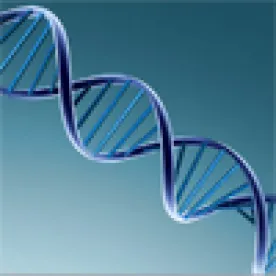Last week the United States Supreme Court denied Sequenom’s petition to review the Federal Circuit’s holding in Sequenom Inc. v. Ariosa Diagnostic Inc., 788 F.3d 1371 (2015) that claims directed to detecting fetal DNA in maternal blood were invalid for failing to recite patent eligible subject matter. Therefore by default, the Court let stand the Federal Circuit’s analysis and determination of patent-ineligibility of the challenged claims of U.S. Patent No. 6,258,540 (the ‘540 Patent).
The Federal Circuit’s Sequenom Decision
 The ‘540 Patent was awarded to inventors Yuk-Ming Dennis Lo and James Stephen Wainscot for “Non-invasive prenatal diagnosis.” Lo and Wainscot discovered that maternal blood contains cell-free fetal DNA (“cffDNA”) which can be used to determine fetal characteristics such as gender and genetic defects. Twenty-seven claims issued. Claims 1, 2, 4, 5, 8, 19-22, 24 and 25 of the ‘540 Patent were at issue before the Federal Circuit. Claims 1, 21, 24 and 25 were representative and recite:
The ‘540 Patent was awarded to inventors Yuk-Ming Dennis Lo and James Stephen Wainscot for “Non-invasive prenatal diagnosis.” Lo and Wainscot discovered that maternal blood contains cell-free fetal DNA (“cffDNA”) which can be used to determine fetal characteristics such as gender and genetic defects. Twenty-seven claims issued. Claims 1, 2, 4, 5, 8, 19-22, 24 and 25 of the ‘540 Patent were at issue before the Federal Circuit. Claims 1, 21, 24 and 25 were representative and recite:
“1. A method for detecting a paternally inherited nucleic acid of fetal origin performed on a maternal serum or plasma sample from a pregnant female, which method comprises amplifying a paternally inherited nucleic acid from the serum or plasma sample and detecting the presence of a paternally inherited nucleic acid of fetal origin in the sample.
21. A method of performing a prenatal diagnosis, which method comprises the steps of:
(i) providing a maternal blood sample;
(ii) separating the sample into a cellular and a non-cellular fraction;
(iii) detecting the presence of a nucleic acid of foetal origin in the non-cellular fraction according to the method of claim 1;
(iv) providing a diagnosis based on the presence and/or quantity and/or sequence of the foetal nucleic acid.
24. A method for detecting a paternally inherited nucleic acid on a maternal blood sample, which method comprises: removing all or substantially all nucleated and anucleated cell populations from the blood sample, amplifying a paternally inherited nucleic acid from the remaining fluid and subjecting the amplified nucleic acid to a test for the Paternally inherited fetal nucleic acid.
25. A method for performing a prenatal diagnosis on a maternal blood sample, which method comprises obtaining a non-cellular fraction of the blood sample amplifying a paternally inherited nucleic acid from the non-cellular fraction and performing nucleic acid analysis on the amplified nucleic acid to detect paternally inherited fetal nucleic acid.”
In holding that the claims failed to recite patent-eligible subject matter, the Federal Circuit applied Alice Corp. v. CLS Bank Int’l, 234 S. Ct. 2347 (2014) and Mayo Collaborative Services v. Prometheus Laboratories, Inc., 132 S. Ct. 1289 (2012)(“Mayo”). The court noted that all asserted claims are directed to a multistep method that starts and ends with cffDNA taken from a sample of maternal blood, which was admitted to be a natural phenomenon – a judicial exception to patent-eligible subject matter. The claims, therefore, were determined to be directed to matter that is naturally occurring.
The court then analyzed the steps of the claims to determine if the steps as a whole recite something more than the judicial exception itself. The court analogized the claims to those in Mayo, in that the steps of analyzing the cffDNA utilized well-understood, routine, and conventional activity at the time the invention was made. As such, the claims as a whole were determined to recite ineligible subject matter.
Patent-eligibility at the USPTO
As early as 2012, the USPTO has issued guidance documents to assist examiners in applying Mayo and subsequent Supreme Court decisions relating to patent-eligibility. In early May 2016, the USPTO issued an update to its prior guidance materials (see my prior post) that addressed claims similar to the challenged claims in the ‘540 Patent. For example, exemplary claim 1 in Example 29 of the May 2016 USPTO guidance recites:
“1. A method of detecting JUL-1 in a patient, said method comprising:
a. obtaining a plasma sample from a human patient; and
b. detecting whether JUL-1 is present in the plasma sample by contacting the plasma sample with an anti-JUL-1 antibody and detecting binding between JUL-1 and the antibody.”
The USPTO’s exemplary claim 1 is similar to claim 1 of the ‘540 Patent in that each is directed to methods for detecting a natural product: JUL-1 in the USPTO example, and cffDNA in Sequenom. The USPTO’s example 29 notes that although a nature-based product limitation is recited in the claim – JUL-1 – an analysis of the claim as a whole indicates that the claim is focused on a process of detecting the JUL-1 protein, and not a product per se. For that reason, the USPTO May 2016 guidance informs examiners that there is no reason to evaluate the claim under the second of the two step analysis, i.e., whether the claim recites something more than the judicial exception itself. The Federal Circuit in Sequenom, in contrast, determined that the step of “amplifying a paternally inherited nucleic acid from the serum or plasma sample and detecting the presence of a paternally inherited nucleic acid of fetal origin in the sample” is no more than routine, conventional technology well known in to those of skill in the art, and therefore, patent-ineligible.
The USPTO example can be distinguished from the facts of Sequenom in that the facts supporting the USPTO’s Example 29 indicates that anti-JUL-1 antibodies were not routinely or conventionally used to detect human proteins such as JUL-1.
Patent-Eligibility after Sequenom
The USPTO’s guidance avoids the holding in Sequenom by using in the exemplar claims of Example 29 a technology – the JUL-1 antibody – that is not conventional, well-known, or routinely used to detect the protein. Until the USPTO issues revised guidelines or the Supreme Court or Federal Circuit addresses the patent-eligibility of similar claims under 35 U.S.C. § 101, diagnostic claims that recite the application of a new technology or the unconventional use of a known technology remain a viable strategy for seeking to patent diagnostic methods that are key to personalized medicine.




 />i
/>i

